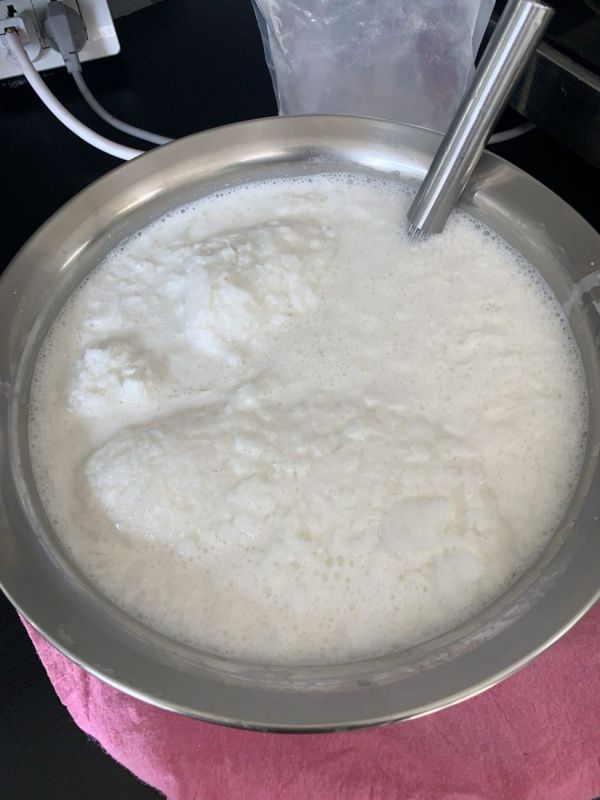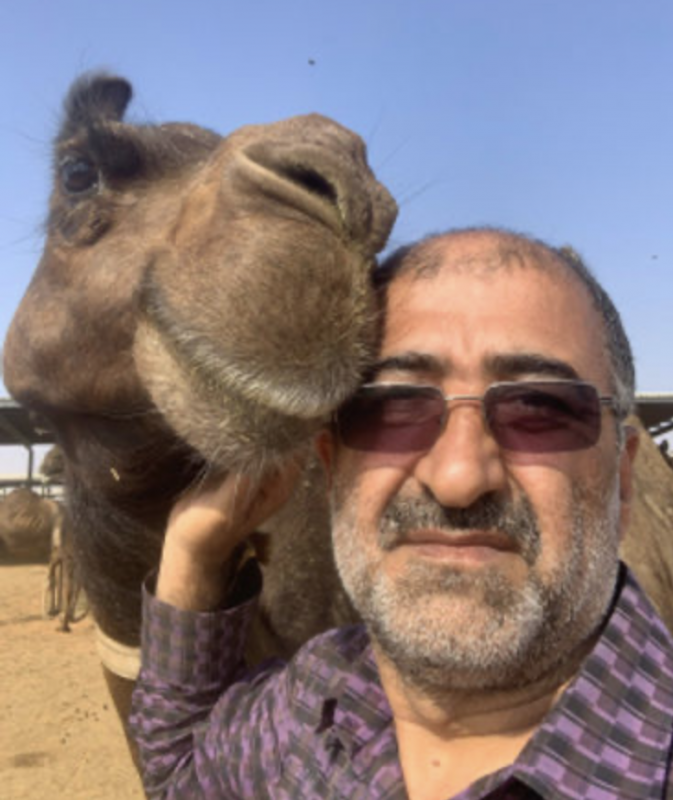Camel Milk Lactoferrin: A Natural Bioactive Compound with Anticancer, Antioxidant, and Antiviral Potential

Abstract
Lactoferrin, a multifunctional glycoprotein abundant in camel milk, exhibits significant antimicrobial properties. This article reviews the health-promoting potential of camel milk-derived lactoferrin, focusing on its antimicrobial activities and its role as a bioactive molecule. Beyond its antimicrobial action, camel milk-derived lactoferrin is recognized for its antioxidant properties, which further enhance its health-promoting potential. It has been demonstrated that lactoferrin can scavenge free radicals, preventing oxidative stress and the resultant cellular damage. This antioxidant effect is particularly beneficial in combating inflammation and preventing diseases associated with oxidative damage, such as cardiovascular diseases and neurodegenerative disorders. Furthermore, lactoferrin plays a crucial role in the immune system by modulating immune responses. It enhances the activity of immune cells like macrophages and neutrophils, boosting the body’s ability to fight infections. These immune-enhancing and antioxidant properties suggest that lactoferrin may not only serve as an antimicrobial agent but also as a therapeutic molecule for improving overall immune function and reducing the risk of chronic diseases.
Keywords: Lactoferrin, camel milk, antimicrobial, bioactive molecule, health benefits
Introduction
Lactoferrin is an iron-binding glycoprotein present in various secretions, including milk, saliva, and tears. It plays a crucial role in the regulation of iron metabolism, modulation of the immune system, and defense against microbial infections. Camel milk, in particular, is rich in lactoferrin, contributing to its potent antimicrobial activity. link.springer.com
In addition to its immune and antioxidant roles, lactoferrin from camel milk has shown promise in various therapeutic areas, including cancer prevention and gut health. Research has indicated that lactoferrin can inhibit the proliferation of cancer cells, particularly in gastrointestinal cancers, by inducing apoptosis and suppressing tumor growth. It also helps regulate gut microbiota, which is essential for digestive health. Lactoferrin’s ability to improve gut health by promoting the growth of beneficial bacteria and reducing pathogenic organisms is particularly significant in conditions like irritable bowel syndrome (IBS) and inflammatory bowel diseases (IBD). With such a wide array of biological activities, camel milk lactoferrin stands out as a powerful bioactive molecule that could have transformative effects in both preventive and therapeutic medicine.
The growing body of research surrounding camel milk and its bioactive components, especially lactoferrin, underscores its potential as a natural, therapeutic agent in a variety of health conditions. Future studies and clinical trials are necessary to fully unlock its potential and confirm its efficacy in human health management. As the interest in natural, functional foods continues to rise, camel milk, with its high lactoferrin content, could become a cornerstone in the development of novel health-promoting products and supplements.
Antimicrobial Properties of Camel Milk Lactoferrin
Studies have demonstrated that lactoferrin isolated from camel milk exhibits broad-spectrum antimicrobial activities against various pathogens, including bacteria, fungi, and viruses. The antimicrobial efficacy of camel milk lactoferrin is attributed to its ability to sequester iron, an essential nutrient for microbial growth, and its capacity to disrupt microbial cell membranes. link.springer.com
Health Benefits and Therapeutic Potential
Beyond its antimicrobial properties, camel milk lactoferrin has been associated with several health benefits, including antioxidant, anti-inflammatory, and immunomodulatory effects. These properties suggest its potential therapeutic applications in managing infections, enhancing immune responses, and possibly contributing to the prevention of certain diseases.
Camel milk lactoferrin (Lf) has been the subject of various studies due to its multifaceted biological activities. Below is a review of selected references focusing on the isolation, characterization, and potential therapeutic applications of lactoferrin derived from camel milk:
- Assessment of Broad-Spectrum Antimicrobial, Antibiofilm, and Antioxidant Activities of Lactoferrin Purified from Camel Milk Colostrum
This study purified lactoferrin from camel milk using cation exchange chromatography and evaluated its antimicrobial properties against pathogens such as methicillin-resistant Staphylococcus aureus (MRSA) and Klebsiella pneumoniae. The purified lactoferrin exhibited significant inhibitory effects, particularly against MRSA, highlighting its potential as a natural antimicrobial agent. link.springer.com - Isolation and Characterization of Bioactive Lactoferrin from Camel Milk by Novel pH-Dependent Method for Large Scale Production
Researchers developed a novel pH-dependent method to isolate highly purified lactoferrin from camel milk. The purified lactoferrin, consisting of 708 amino acids with a molecular weight of 77.3 kDa, demonstrated cytotoxic effects against HeLa cells, indicating its potential anticancer properties. The method’s simplicity and scalability make it suitable for industrial production of bioactive lactoferrin. europepmc.org - Encapsulation of Purified Lactoferrin from Camel Milk on Calcium Alginate Nanoparticles and Its Effect on Growth of Osteoblasts Cell Line MG-63
In this study, lactoferrin extracted from camel milk was encapsulated onto calcium alginate hydrogel particles. The encapsulated lactoferrin was then tested on the MG-63 osteoblast cell line. The findings suggested that the encapsulated lactoferrin could promote the growth of osteoblast cells, indicating its potential application in bone health and regenerative medicine. link.springer.com - Impact of Camel Milk Lactoferrin Peptides Against Breast Cancer Cells: A Combined In Silico and In Vitro Study
This research investigated the anticancer potential of peptides derived from camel milk lactoferrin against MCF-7 breast cancer cells. Utilizing both computational and laboratory approaches, the study identified specific peptides that exhibited significant anticancer activity, suggesting their promise as therapeutic agents for breast cancer treatment. frontiersin.org - Determination of Lactoferrin in Camel Milk by Ultrahigh-Performance Liquid Chromatography-Tandem Mass Spectrometry Using an Isotope-Labeled Winged Peptide as Internal Standard
This study developed and validated a method for quantifying lactoferrin in camel milk using ultrahigh-performance liquid chromatography-tandem mass spectrometry. The approach involved purifying camel lactoferrin and identifying signature peptides for accurate measurement, providing a reliable technique for assessing lactoferrin content in camel milk. mdpi.com
These studies collectively highlight the diverse biological activities of camel milk lactoferrin, including its antimicrobial, anticancer, and potential bone health-promoting properties. The development of efficient purification and characterization methods further facilitates the exploration of lactoferrin’s therapeutic applications. link.springer.com
Conclusion
Camel milk-derived lactoferrin stands out as a potent bioactive molecule with promising antimicrobial and health-promoting properties. Its multifaceted biological activities underscore the potential of camel milk as a valuable component in functional foods and therapeutic agents.
From April 7 to 11, 2025, the 16th Dairy Olympics, the key event in the global dairy market, will take place in the city of Al Ain, bringing together leading global experts in the dairy industry. You can participate in the Dairy Olympics by registering via the link: https://olympics.dairynews.today/












